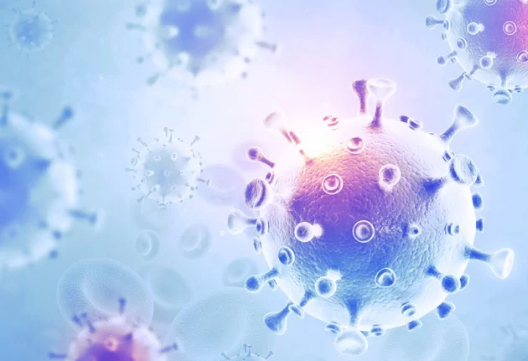Blocking Immune System Pathway Could Stop COVID-19 Infection, Finds Study
October 15, 2020
Source: drugdu
 494
494
By HospiMedica International staff writers
Posted on 14 Oct 2020

Image: Colorized scanning electron micrograph of a cell (purple) heavily infected with SARS-CoV-2 virus particles (yellow) (Photo courtesy of National Institute of Allergy and Infectious Diseases, National Institutes of Health)
A recent study has shown that blocking a specific protein in a biological pathway may prevent SARS-CoV-2 infection and keep the virus from misdirecting the immune system against healthy cells and organs.
While the world waits eagerly for a safe and effective vaccine to prevent infections from SARS-CoV-2, the virus behind the COVID-19 pandemic, researchers also are focusing on better understanding how SARS-CoV-2 attacks the body in the search for other means of stopping its devastating impact. The key to one possibility - blocking a protein that enables the virus to turn the immune system against healthy cells - has been identified in a recent study by a team of researchers at Johns Hopkins Medicine (Baltimore, MD, USA).
Scientists already know that spike proteins on the surface of the SARS-CoV-2 virus — making the pathogen look like the spiny ball from a medieval mace — are the means by which it attaches to cells targeted for infection. To do this, the spikes first grab hold of heparan sulfate, a large, complex sugar molecule found on the surface of cells in the lungs, blood vessels and smooth muscle making up most organs. Facilitated by its initial binding with heparan sulfate, SARS-CoV-2 then uses another cell-surface component, the protein known as angiotensin-converting enzyme 2 (ACE2), as its doorway into the attacked cell.
The Johns Hopkins Medicine team discovered that when SARS-CoV-2 ties up heparan sulfate, it prevents factor H from using the sugar molecule to bind with cells. Factor H’s normal function is to regulate the chemical signals that trigger inflammation and keep the immune system from harming healthy cells. Without this protection, cells in the lungs, heart, kidneys and other organs can be destroyed by the defense mechanism nature intended to safeguard them.
“Previous research has suggested that along with tying up heparan sulfate, SARS-CoV-2 activates a cascading series of biological reactions - what we call the alternative pathway of complement, or APC - that can lead to inflammation and cell destruction if misdirected by the immune system at healthy organs,” said study senior author Robert Brodsky, M.D., director of the hematology division at the Johns Hopkins University School of Medicine. “The goal of our study was to discover how the virus activates this pathway and to find a way to inhibit it before the damage happens.”
The APC is one of three chain reaction processes involving the splitting and combining of more than 20 different proteins - known as complement proteins - that usually gets activated when bacteria or viruses invade the body. The end product of this complement cascade, a structure called membrane attack complex (MAC), forms on the surface of the invader and causes its destruction, either by creating holes in bacterial membranes or disrupting a virus’ outer envelope. However, MACs also can arise on the membranes of healthy cells. Fortunately, humans have a number of complement proteins, including factor H, that regulate the APC, keep it in check and therefore, protect normal cells from damage by MACs.
In a series of experiments, the Johns Hopkins researchers used normal human blood serum and three subunits of the SARS-CoV-2 spike protein to discover exactly how the virus activates the APC, hijacks the immune system and endangers normal cells. They discovered that two of the subunits, called S1 and S2, are the components that bind the virus to heparan sulfate - setting off the APC cascade and blocking factor H from connecting with the sugar - and in turn, disabling the complement regulation by which factor H deters a misdirected immune response. In turn, the resulting immune system response to chemicals released by the lysing of killed cells could be responsible for the organ damage and failures seen in severe cases of COVID-19. Most notably, the research team found by blocking another complement protein, known as factor D, which works immediately upstream in the pathway from factor H, they were able to stop the destructive chain of events triggered by SARS-CoV-2. Making the discovery even more exciting is that there may already be drugs in development and testing for other diseases that can do the required blocking. The researchers hope that their work will encourage more study into the potential use against COVID-19 of complement-inhibiting drugs already in the pipeline for other diseases.
Related Links:
Johns Hopkins Medicine
Read more on
- How DeepSeek Helps You Succeed Efficiently February 11, 2025
- New clues to why some people suppress HIV without drugs May 24, 2023
- Molecular component of caffeine may play a role in gut health March 15, 2023
- An overview of COVID-19-associated neurological complications in children March 15, 2023
- What Mutations of SARS-CoV-2 are Causing Concern? April 5, 2022
your submission has already been received.
OK
Subscribe
Please enter a valid Email address!
Submit
The most relevant industry news & insight will be sent to you every two weeks.



